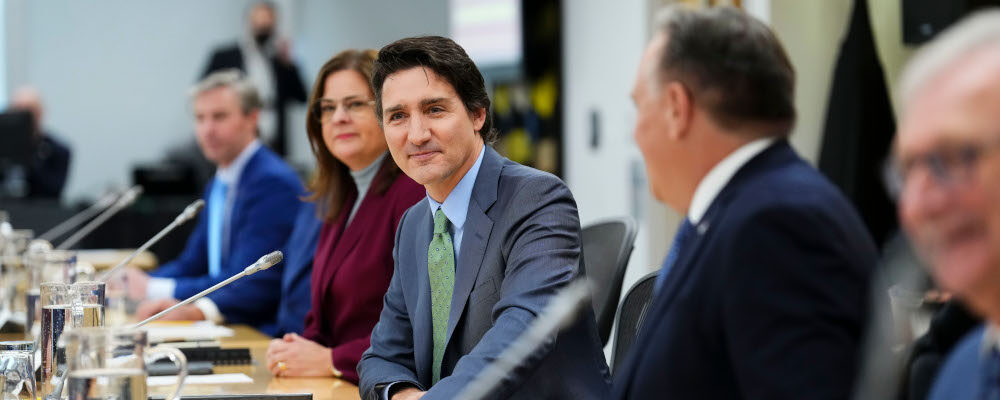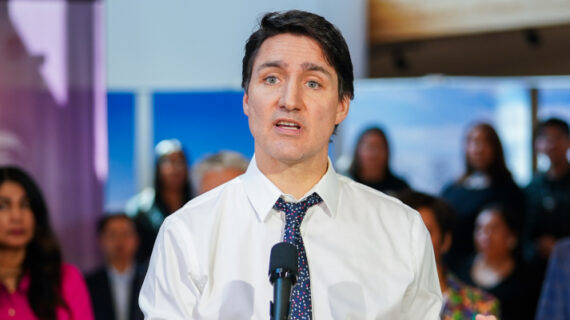Canadian federalism has come to be marked by something of a standard script: provincial premiers demand more money from the federal government and insist that incremental federal dollars come without any conditions.
Yet the provinces can’t have it both ways: if they’re going to demand that Ottawa use its spending power, it will invariably come with strings attached.
That’s even moreso the case now they’re up against a Liberal government that relishes its growing role as the chief financier to the provinces to drive its own political agenda and ideological priorities outside of its policymaking jurisdiction.
Understanding what has increasingly drawn the federal Liberal Party into the realm of provincial and local jurisdiction is key to interpreting contemporary Canadian policy and politics.
The old Liberal Party: Slayer of Separatists, Defender of Unity, Winner of Elections
For most of the 20th century, the raison d’etre of the Liberal Party was national unity. Of the two major parties, the Liberals could best bridge Canada’s linguistic divide, defeat Quebec separatism, and keep the country united. As long as national unity was threatened by Quebec nationalism, Canadians were inclined to default to the Liberal Party as the national party most capable of meeting this existential threat to the country.
From Wilfred Laurier to Jean Chretien, Liberal-led governments were also the political vehicle most capable of channeling and subsuming the rising aspirations of French-Canadians into the nation-building efforts of Canada as a whole, such as a new flag (1965), official bilingualism (1969), and the Charter of Rights and Freedoms (1982). The Liberals (who were led by Quebeckers for 44 of the past 55 years) had the best answer to the Quebec question and it kept them in power for nearly two-thirds of the 20th century.
For whatever reason, the forces of Quebec separatism have withered over the recent decades. The threat to national unity has receded and with it the original unifying purpose of the Liberal Party. Last year’s Quebec election witnessed the continuation of this secular political trend with a further decline of support for the Parti Quebecois. The PQ set a new record low of 14 percent of the popular vote and won the smallest number of seats in its history. It lost official party status.
Canada’s so-called natural governing party (an obsolete nickname when you look at the election results for the past 45 years, but I digress) has been bereft of its historic role for years. As a result, the Liberals have had to reconceptualize their raison d’etre for a new political context.
The new Liberal Party: Banker to the Provinces, the Nosy Parker of Federalism
They’ve found it in the form of the federal spending power and the expression of their ideological and policy priorities within the realm of provincial and local jurisdiction. It’s not a coincidence, for instance, that most of the Trudeau government’s biggest accomplishments fall squarely outside of its jurisdiction: child care, dental care, health care, municipal infrastructure, and affordable housing.
A strict interpretation of the constitution’s division of powers would exclude Ottawa from intervening in any of these policy areas. Yet without the demands of national unity at the forefront, the Liberals have come to view their purpose as a national party to advancing policy homogenization across the provinces.
Now, there’s some debate about the principles of cooperative federalism. The Trudeau government’s climate policy is a good example. But it’s fair to say that what we’ve witnessed in recent years extends the notion of cooperative federalism well beyond its classroom conception into a new model in which the only practical constraint on the federal spending power is the duration of negotiations with money-hungry premiers.
The most recent round of federal-provincial wrangling over health-care funding illustrates the Trudeau government’s self-image as the “banker to the provinces.” The pandemic arguably demonstrated the need for more public dollars for provincial health-care systems. That’s certainly been the prevailing view in a lot of public opinion polling.
It wasn’t preordained however that those dollars had to come from the federal government. Nothing stopped the provincial governments from raising their own taxes or repurposing dollars from elsewhere to boost spending in their own health-care systems. Yet it was easier as a matter of politics to insist on federal dollars. And the Trudeau government was happy to oblige.
There was a performative back and forth about conditions but the truth is both orders of government saw it in their political interests to get a deal. The provinces got to boost their health-care budgets without having to confront trade-offs or difficult fiscal choices. The federal government got to swoop in and involve itself in administration, design, and policy choices concerning health care.

It doesn’t need to be this way. To the extent that the provinces feel that “their” voters have hit maximum levels of taxation and spending, and that the federal government has excess revenues to discharge its responsibilities (what used to be called the “fiscal imbalance”), there’s scope for rethinking fiscal federalism. Much has been written, for instance, about the wisdom of transferring taxation room from the federal government to the provinces.1“Repairing Health Care in Canada: Time to Take the First Step.” Peter Nicholson, January 12, 2023, Johnson-Shoyame Graduate School of Public Policy
A shorter, simpler solution is for the federal government to reply with a flat no in response to provincial calls for more transfers. That would require supreme political toughness on the part of the federal government. It also presupposes, however, that Ottawa doesn’t like having a hand in provincial policymaking.
Listen to the prime minister’s dad. He had a good point
Yet the standard script doesn’t quite seem sustainable anymore. Ottawa’s public finances have deteriorated as a result of the COVID-19 pandemic. There are also growing demands for investments in federal areas such as our long-suffering military.
And that doesn’t even account for the harms that the federal spending power can impose on federalism itself. It contributes to a lack of transparency and accountability. Blame-shifting is rampant. Hard political choices are avoided or delayed.
The current prime minister’s father anticipated these problems way back in 1961. He observed:2Pierre Trudeau, The Practice and Theory of Federalism. Social Purpose for Canada (1961)reprinted in Federalism and the French Canadians, 1968
In short, it seems as though whenever an important segment of the Canadian population needs something badly enough, it is eventually given to them by one level of government or the other, regardless of the constitution. The main drawback to such an approach is that it tends to develop paternalistic instincts in more enterprising governments, at the expense of democratic maturation in others.
Financing terms may change
In an era of deficit-financed largesse, the Trudeau government may be generous with the provinces but there’s no guarantee that this will continue. One day, federal funding may be cut or the terms could get tougher. A subsequent government could even use the same federal dollars to compel the provinces to implement policy changes that run counter to their political preferences or provincial priorities.
If the provinces keep asking for money from Ottawa, then they should beware of the political golden rule: He who has the gold makes the rules.




